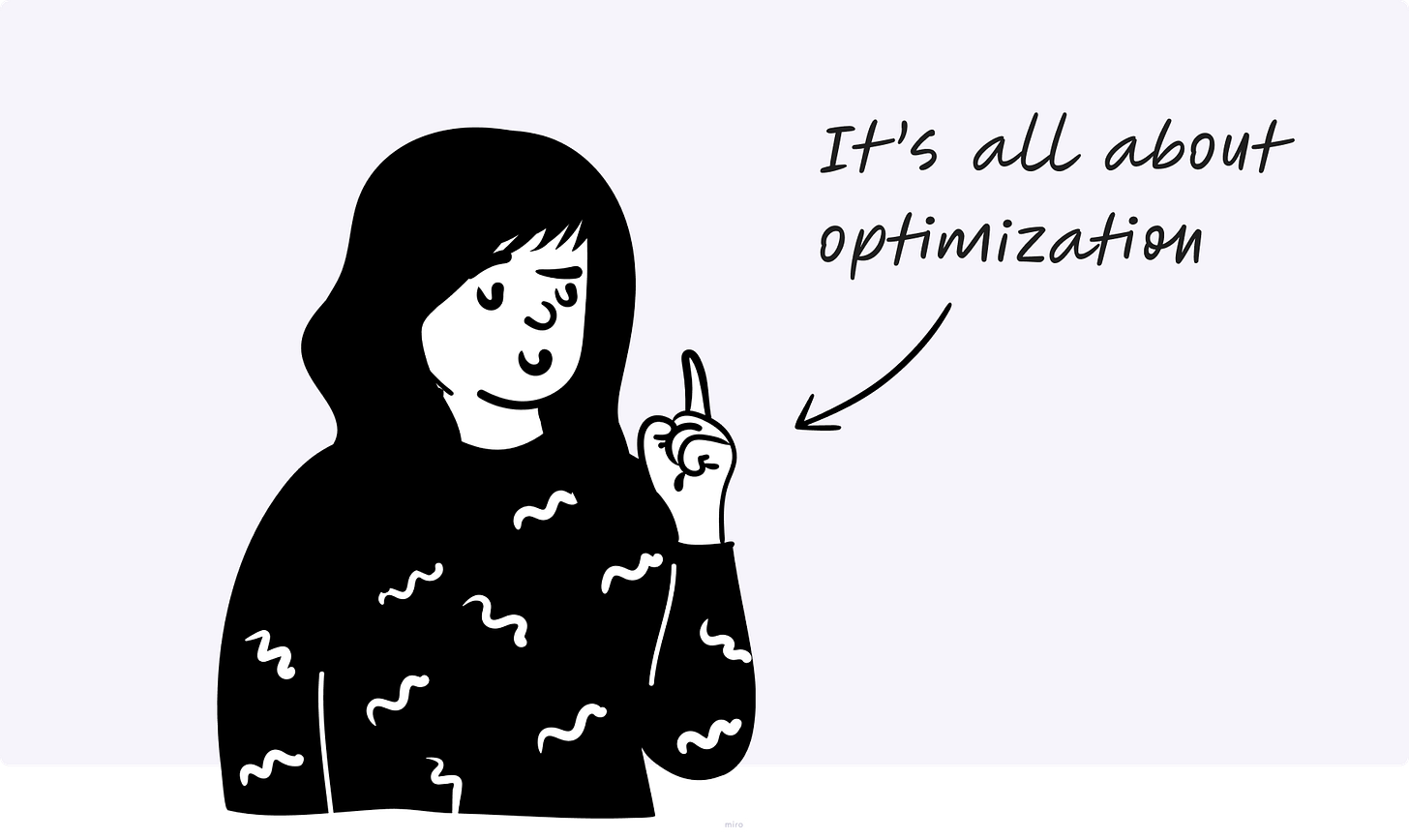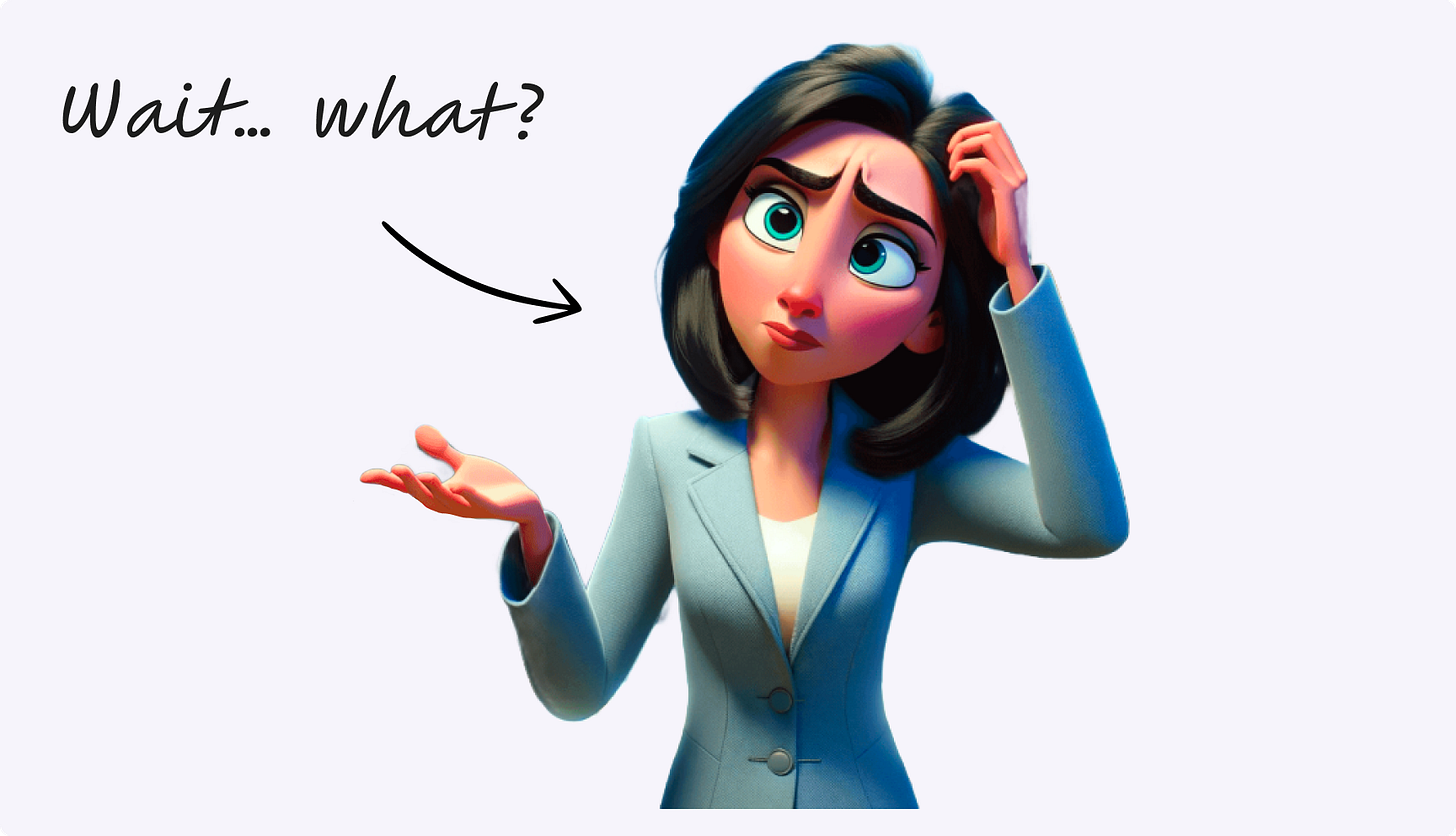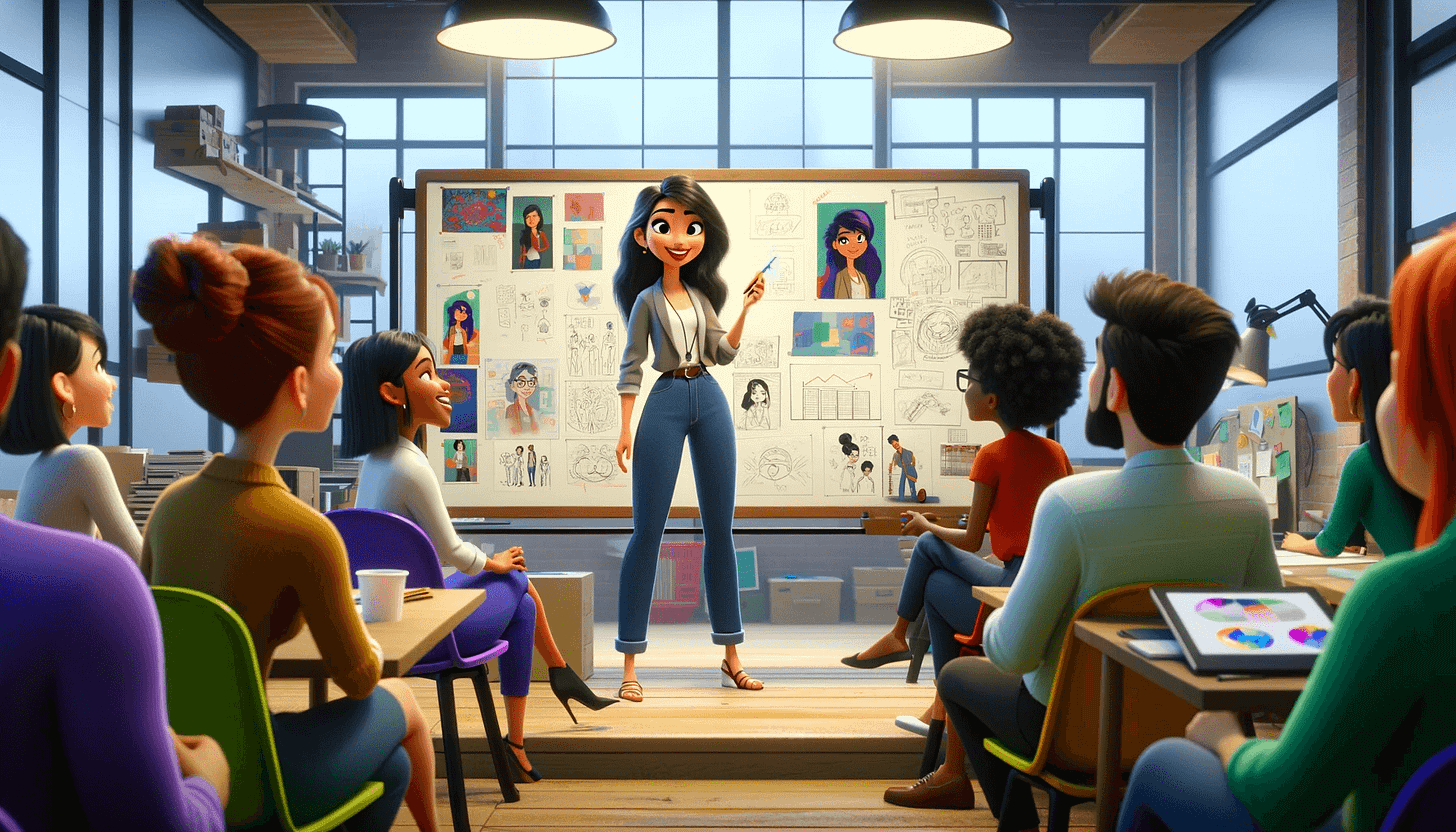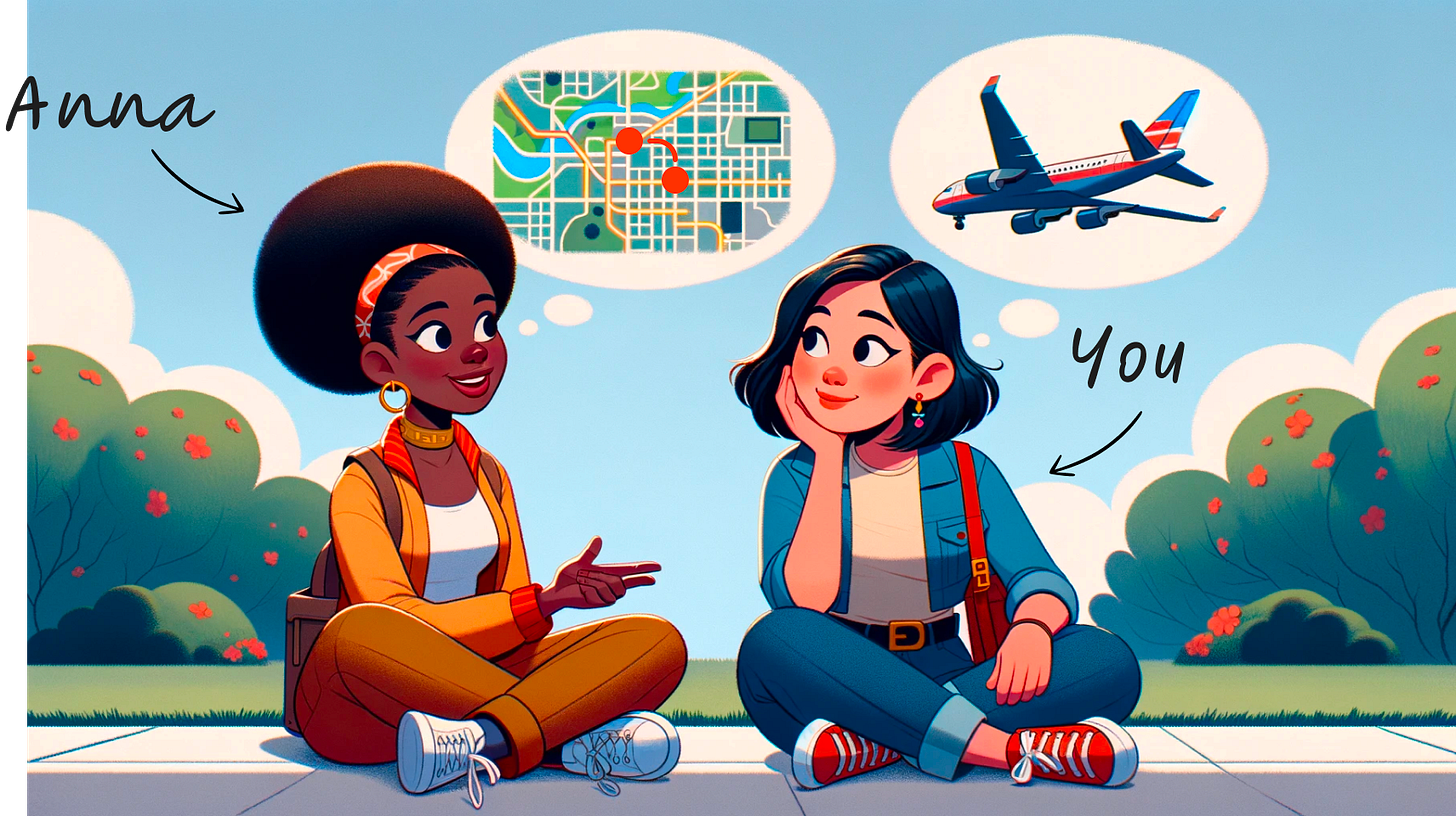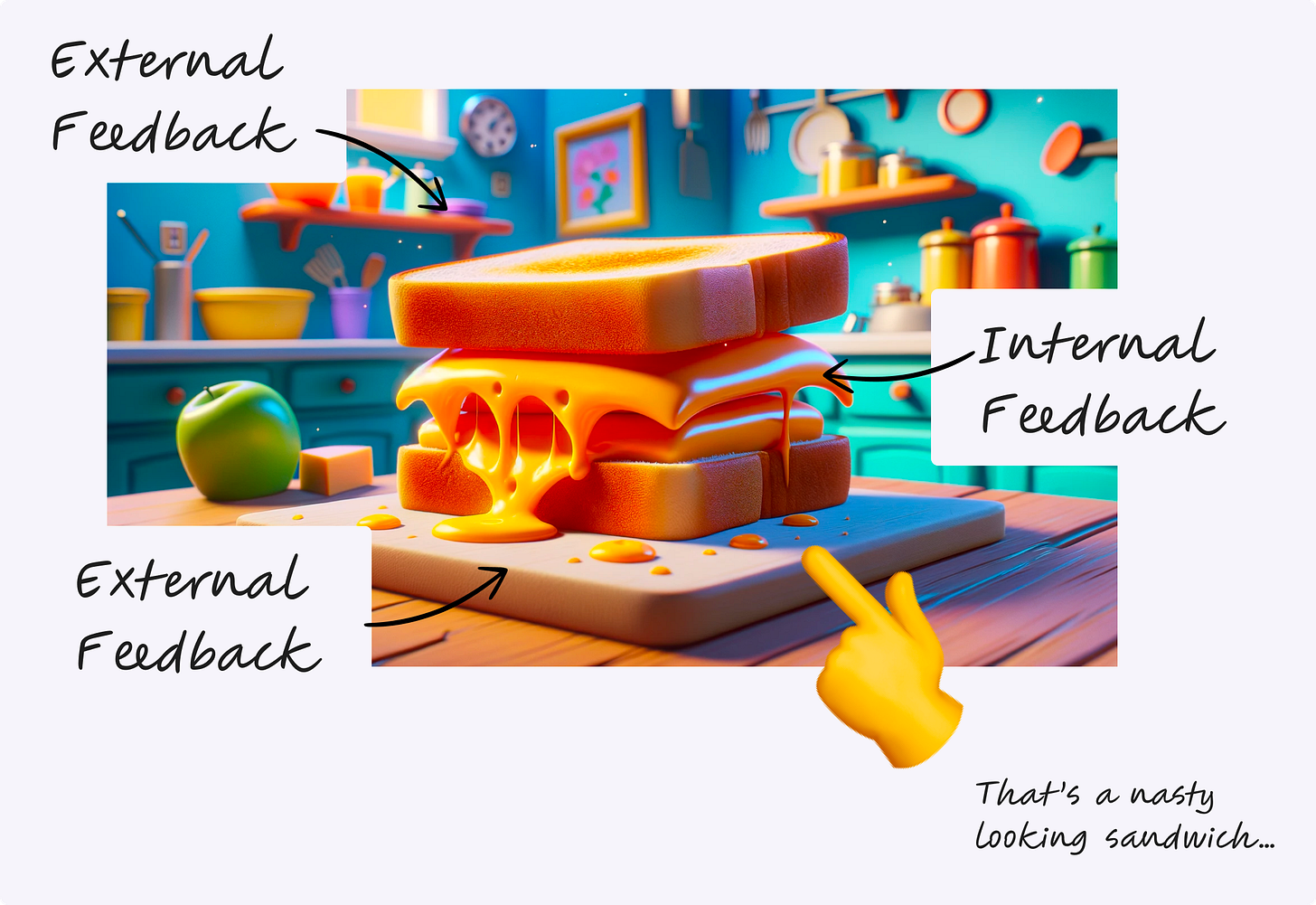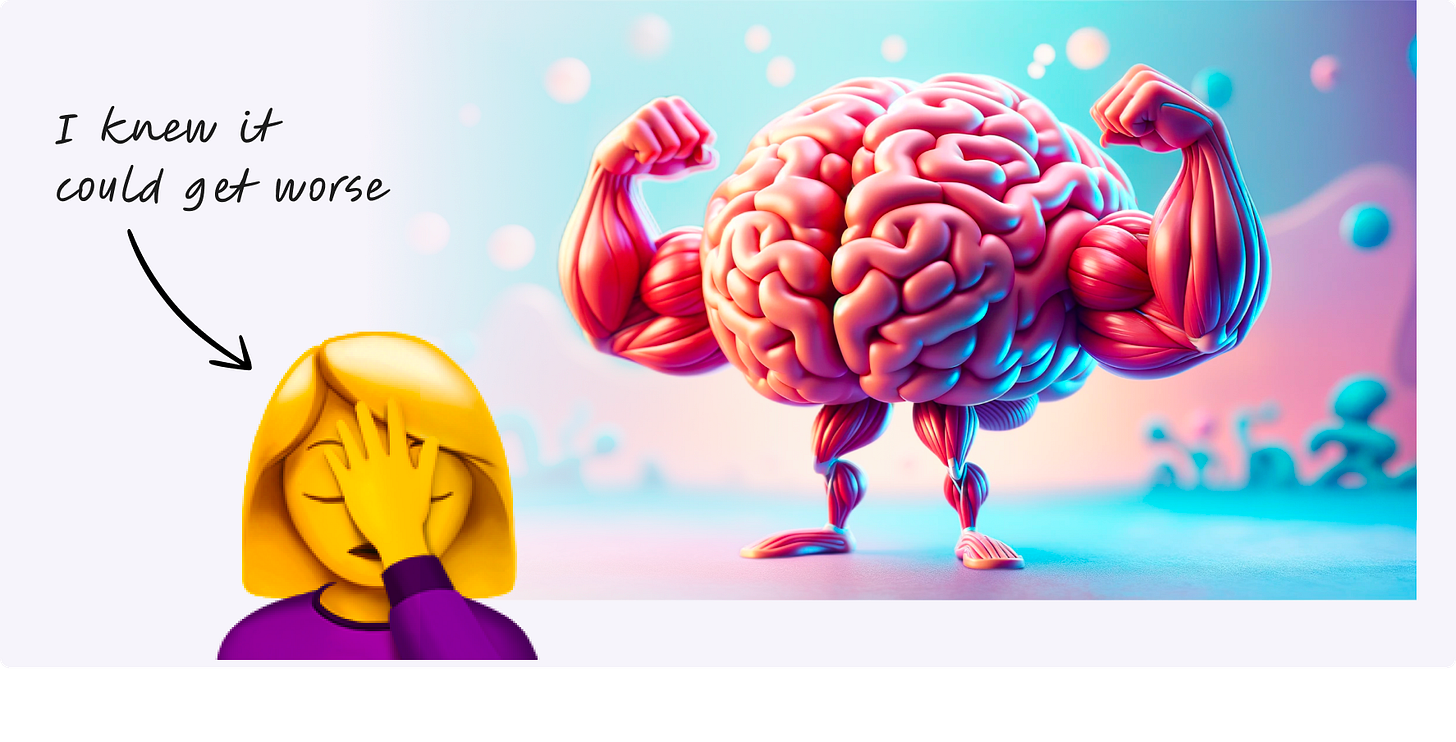⏳ 3 tips to become more effective in UX/UI design faster
⏳ 3 tips to become more effective in UX/UI design faster |
How to improve your workflow and become a faster, more efficient and subsequently happier designer. You're welcome 😇 Happy Sunday, wonderful Design Peeps, In this week’s newsletter, we will talk about: 🌪️ Effectiveness vs efficiency in Design ⌛️ 3 Benefits of becoming more efficient 👩🏼💻 3 Tips on how to achieve a higher efficiency in design
🌪️ Effectiveness vs efficiency in DesignI’m going to state the obvious first: Effectiveness and efficiency are two sides of the same coin, yet they hold distinct meanings. Effectiveness means achieving the right results and meeting the intended objectives. It's about the impact of your design — does it solve the problem? Does it resonate with the target audience? On the other hand, efficiency is about the process. It's how you get to those results. Are you utilizing resources, including time and tools, in the most productive way possible? Efficient design processes often involve streamlining workflows, using technology smartly, and eliminating unnecessary steps. While effectiveness focuses on the 'what,' efficiency is all about the 'how.' A designer might create an incredibly effective campaign that hits all the right notes with the audience, but if it took an unreasonably long time and consumed excessive resources, it wasn't efficient.
The key (not only in design) is to balance these two: creating impactful, goal-oriented designs whist optimizing the process and resources used. ⌛️ 3 Benefits of becoming more efficientBecoming more efficient in design doesn't mean cutting corners. It's about smart management of your skills, time, and tools to create the best possible work in a sustainable, productive manner. You might think it takes me a lot of time to actually become efficient and effective! Yes, that is called skillset, and needs to be developed. It takes time and hard work, but the outcome is definitely worth fighting for:
Needless to say, all of the above ☝️inevitably lead to an increase in income potential, which in the long run is what we (presumably) are all working towards. 👩🏼💻 3 Tips on how to achieve a higher efficiency in designYou’ll probably think now… ok, that’s nice. But how do I become more efficient when working in design. Good news; the answer to that is pretty straight forward. Here are three crucial steps. 1. Don’t skip steps in the process or you’ll have to go backI often encounter designers who tell me “This is the brief for my project, and this is the high fidelity design I started”.
Even if you are only starting out with design, you’ll probably know that there is a process that should be followed, and that decisions are not made on a whim. The other extreme is that students seem to think they have to follow all the steps in order to achieve success in design, which is also a misconception. I like to think of the design process as a building process, and your knowledge is your toolbox. You can use the tools inside (design process exercises such as surveys, personas, affinity maps or task flows) in the order that makes the most logical sense for the particular project you are working on. 2. Get feedback earlySimilarly counterproductive is the process where designers work in a vacuum, and present team members, stakeholders and clients with a finished design, that has not gone through any feedback or testing sessions.
There are two types of feedback we should seek no matter how far we are into the design process:
What can go wrong? Imagine: You come across Anna, who tells you about her problem. She struggles to get to work on time when she gets up in the morning. “I need to get to my work by 8am.” Your response is: “I have an idea! ✈️ ”
There is not much context, you don’t know where she lives, where her work is, nor how much time she has to commute. Let’s say for a second that you nail the problem statement, though. You understand what her problem is, and instead of designing a Boeing 735, you go off and come back with an app design that can track all the public transportation methods within her vicinity by geolocation, and it solves her problem right away. However, the developments costs of this app are higher than you would like, and since you built it already, you want for more people to use it. But you don’t even know if there are more people like her, who struggle with the same problem… You always want to make sure you came to the right conclusions, and the design decisions you made are helpful for people who are experiencing the problem you are solving. Even if you experience this problem yourself, you should never assume to be the user. Unless you are okay with potential failure, and developing a product just for yourself. Sometimes this happens as well. If that is not the case, the most effective feedback (in my experience) when working with a feature, is to use a sandwich method:
As a side dish, some products also have a group of beta testers, who will test the finished feature once it is developed, so we can spot potential bugs before the product gets released to thousands of people. 3. Master your design tool of choice.You might think it’s very daunting to learn a new tool, and that is certainly the case. However, the one thing to develop a faster workflow is practice, practice, practice. There are two reasons for this:
Yes, muscle memory. You might have heard that blind people can make their way around their own home without a cane, because they remember where things are positioned, and how far apart they are. That is a form of muscle memory, and it’s meant to make us more efficient, effective and ultimately safer. Whilst that is an amazing example, it’s not the only one:
Once I moved into a home, and whilst taking some of my stuff up the stairs, I tripped over one of the steps, which was a centimeter taller than the rest of them. Our bodies are so fine tuned, they will notice a tiny difference. The same thing happened every time I would go up those same stairs for the next few days, but soon my body developed muscle memory, and I stopped noticing that one step was taller than the rest. I wouldn’t have been able to consciously tell you which step it was, but my body knew to lift my feet high enough above the ground to avoid tripping. We can use this mechanism to our advantage when designing, by performing the same task over and over again. Typing with all ten fingers on a keyboard is another great example. When designing in your design tool of choice (I use Figma and Affinity Designer), training yourself to do the same tasks in the most efficient and fast way is going to train that muscle memory. If, from the very beginning, you find the necessary shortcuts to switch tools, you will find yourself switching back and forth between scale (k) and move (v) with ease, no mouse required. What are your favorite Figma shortcuts? Did I miss any tips and strategies you know of? Let me know. See you in two weeks! -D. |

